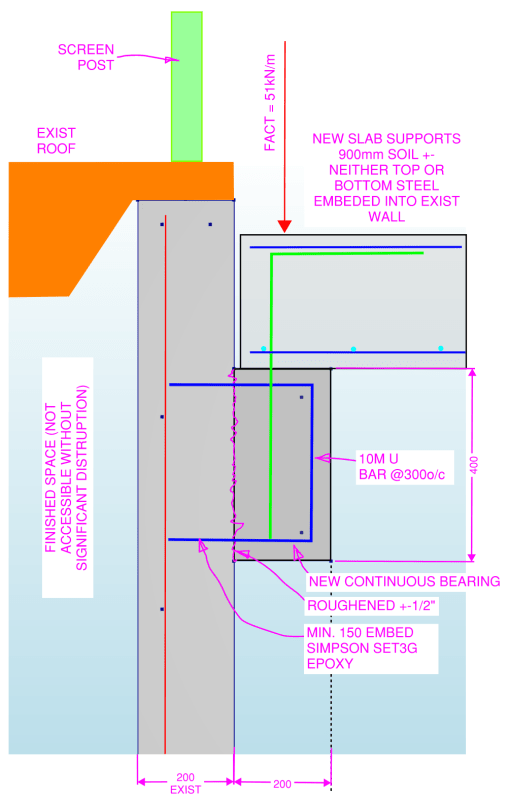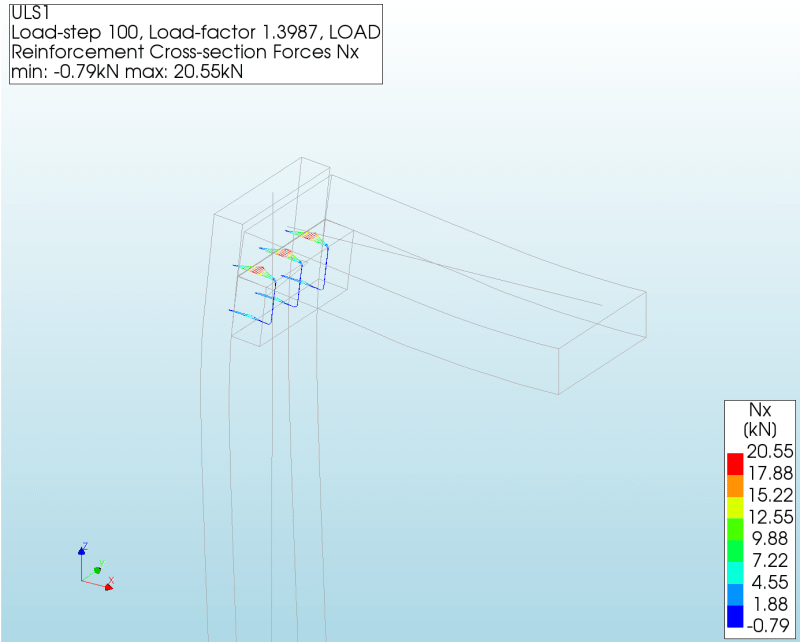-
1
- #1
I was asked to offer an opinion on the suitability of the detail below. They are planning to build a tunnel adjacent to the existing building. The tunnel will have a slab over it that supports 900mm of soil. I was only asked to comment on the continuous slab ledge. I would prefer to see a 40mm bearing surface for the new slab, but they are not too interested in changing the detail. In general the numbers do seem to work, but reading Joel's thread I thought I should seek others opinion on the field drilling/epoxy anchorage.

Corrected sketch

Corrected sketch


![[pipe] [pipe] [pipe]](/data/assets/smilies/pipe.gif)